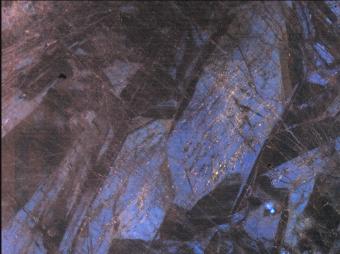Mines researchers develop new model for orogenic gold formation
Findings from the study, conducted at the Garrcon gold deposit in Canada, were recently published in Nature Scientific Reports

A new model for the formation of orogenic gold deposits developed by researchers at Colorado School of Mines could have significant implications on the exploration of much of the world’s known gold deposits.
Orogenic gold deposits – which account for about one-third of the world’s gold production – are comprised of complex quartz vein arrays. They are typically mined underground or in open pits around the world.
The new study, conducted at the Garrcon gold deposit in the Archean Abitibi greenstone belt of Canada, revealed that the veins in orogenic gold deposits form during three distinct stages that record different pressure regimes. The findings were recently published in the journal Nature Scientific Reports.
“For decades, the economic geology community has struggled to identify the conditions of gold deposition in orogenic gold deposits as the veins in these deposits are deformed and many workers believed that the reconstruction of the sequence of mineral formation would not be possible,” said co-author Thomas Monecke, professor of economic geology at Mines. “Now we know that the native gold in these deposits did not form under the same conditions as the quartz that makes up the bulk of the veins. The evidence we derived from the study of fluid inclusions, which are micrometer-sized inclusions of water trapped in the quartz, clearly shows that the late gold was deposited at lower pressure conditions than the earlier quartz.”
The first stage of vein formation involves the growth of quartz grains in fractures held open by hydrothermal fluids at high pressures. Subsequent fluid flow at fluctuating pressure conditions causes the recrystallization of the earlier formed vein quartz and the precipitation of sulfide minerals, with some of the sulfide minerals containing microscopic gold. Late fluid flow occurs at near-hydrostatic conditions and results in the formation of the texturally late, coarse native gold that occurs along quartz grain boundaries and in open spaces.
The research team proposed a model whereby the systematic evolution of the pressure regime in orogenic gold deposits such as Garrcon is explained by the relative movement of fault-fracture meshes across the base of the brittle-ductile transition zone in the upper crust resulting in the observed changes in the pressure regime.
“I have studied fluid inclusions for my entire career. This was a fantastic study that allowed us to integrate fluid inclusion petrography with textural observations at the thin section scale to unravel the complex processes by which gold is deposited during mountain building events. It is amazing that we could make those observations on a deposit that is about 2.7 billion years old.” said T. James Reynolds, affiliate faculty in the Department of Geology and Geological Engineering at Mines.
Lead author on the study was Mines Geology alum Miguel Tavares Nassif PhD ‘19, who now works in the mineral industry in Canada.
“The results of our study have significant implications to the exploration for orogenic deposits,” Tavares Nassif said. “Since graduation from Colorado School of Mines, I have developed new exploration guidelines for this important deposit type and contributed to successful exploration at one of Canada’s newest gold discoveries.”
Additional co-authors include Yvette Kuiper, associate professor of structural geology; Richard Goldfarb, research professor in economic geology; Sandra Piazolo, professor in structural geology and tectonics at the University of Leeds (UK); and Heather A. Lowers of the U.S. Geological Survey.
Read the full study, "Formation of orogenic gold deposits by progressive movement of a fault‑fracture mesh through the upper crustal brittle‑ductile transition zone" at nature.com/articles/s41598-022-22393-9.




